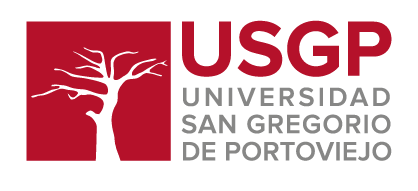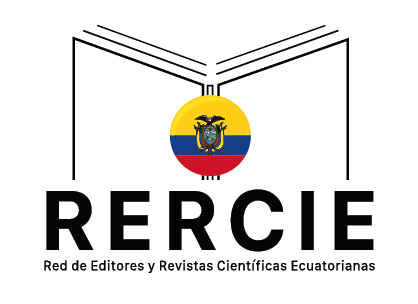Zero waste as an economic criterion of efficiency of the mining enterprise’s activity
DOI:
https://doi.org/10.36097/rsan.v1i30.905Palabras clave:
exploitation deposit, environment, technology assessment, efficiency criteria, waste managementResumen
When assessing the economic efficiency of economy’s mining sector, the following economic problems are of priority: the state of mineral deposits, the concentration of property, the raw material economy, dependence on world prices for raw materials, volatility and risks, the deficit of foreign investments, and so on. The issues of the economic environment’s volatility and limited financial and economic resources, rationalization of the use of resource determinants of regional development as well as their modernization development factors, the issues of creating a favorable institutional and infrastructural environment are regarded to be urgent. As a tool for the formation of the regional economy is the regional clustering direction and subregional economic systems, the prospects of which are associated with the processes of integration of economic entities. The current stage of development of the Russian economy is positioned as a deep transformation of commodity production according to the radical improvement of technology development. The addition of potential of chemical energy to the predominantly mining mechanical energy opens up new prospects to be involved in the operation of still inaccessible mineral resources. This process requires the development of other economic efficiency criteria. The proposed criterion for the mining enterprise’s evaluation effectiveness is a priority condition of non-waste production. Environmental damage due to improper use (waste) is differentiated based on the amount and cost of lost metal and mineral ingredients at local, regional, global and hierarchical levels. The damage components and economic efficiency can be determined based on the extent of utilization, costs and technological level of production.
Citas
Adibi N., Ataee-pour M., Rahmanpour M., (2015). Integration of Sustainable Development Concepts in Open Pit Mine Design, Journal of. Clean. Prod, Vol. 108. pp. 1037–1049.
Capilla A. V., Delgado A. V., (2015). The Destiny of the Earth’s Mineral Resources. London: World Scientific Publishing Co. Pte. Ltd., p. 289.
Emad M. Z., Vennes I., Mitri H., Kelly C. (2014). Backfill Practices for Sublevel Stopping System, Mine Planning and Equipment Selection Chapter: Proceedings of the 22nd MPES Conference, 14th – 19th October 2013, Switzerland: Springer International Publishing, pp. 391–402.
Freeman A. M., Herriges J. A., Kling C. L. (2014). The Measurement of Environmental and Resource Values, Theory and Methods, New York, USA: RFF Press, pp. 325.
Golik V.I., Khasheva Z.M., Shulgatyi L.P., (2015). Economical Efficiency of Utilization of Allied Mining Enterprises Waste, Journal of Social Sciences, vol. 10, issue 6, pp. 750-754.
Golik V.I., Lukianov V.G., KHasheva Z.М, (2015). The Study the Possibility and Feasibility of Using Tailings Ore to Build Solid Mixtures, News of Tomsk Polytechnic University, Engineering of Geo-resources, vol. 326, issue 5. pp. 6-14.
Golik V.I., Razerenov U.I., Стralaychenko С.G., KHasheva Z.М. (2015). Principles and Economic Efficiency of Combining Ore Mining Technologies, News of Tomsk Polytechnic University, Engineering of Geo-resources, vol. 326, issue 7, pp. 6-14.
Golik V.I., Gabaraev O.Z., Maslennikov S.A., Khasheva Z.M., Shulgaty L.P., (2016). The Provision of Development Conversion Perspectives into underground Ones for Russian Iron Ore Deposits Development, Journal of Social Sciences, vol. 11, issue18, pp. 4348-4351
Henckens M. L. C. M., van Ierland E. C., Driessen P. P. J., Worrell E., (2016). Mineral Resources: Geological scarcity, market price trends, and Future Generations, Resources Policy, vol. 49, pp. 102–111.
Withana S., Brink P. T., Illes A., Nanni S., Watkins E. (2014). Environmental Tax Reform in Europe: Opportunities for the future: A Report for the Netherlands Ministry of Infrastructure and Environment, Brussels, p. 61
Dmitrak Yu.V., Kamnev E.N. (2016). JSC "Leading design and survey and research Institute of industrial technology" - the Path of 65 years. Mining journal, issue 3. pp. 6-12.
Khasheva Z.M., Shulgaty L.P., Golik V.I., Razorenov Yu.I., Ignatov V.N. (2016). Combination Prospects for Ore Deposit Development Stage, International Business Management, Т. 10. № 20. pp. 4726-4730.
Zhen-Dong Liu, Gan-Jiang Tao, Qing-Yun Ren, Dong-Sheng Yang. (2011). Calculation of Loss Ratio and Dilution Ratio on End Ore Drawing Based on Random Medium Ore Drawing Theory, Meitan Xuebao, Journal of the China Coal Society, vol. 36(4).
Zhou C., Gong Z., Hu J., Cao A., Liang H. A (2015). Cost-Benefit Analysis of Landfill Mining and Material Recycling in China, Waste Management, vol. 35, pp. 191–198
Khasheva Z.M., Shulgaty L.P., Golik V.I., Razorenov Yu.I., Karginov K.G., (2016). The Study of the Equivalence of Ore Deposit Development Indicators, International Business Management, Т. 10. № 20. pp. 4868-4872.
Golik V.I., Gabaraev O.Z., Maslennikov S.A., Khasheva Z.M., Shulgatyi L.P., (2016). The Provision of Development Conversion Perspectives into Underground Ones for Russian Iron Ore Deposits Development, The Social Sciences, vol. 11, issue 18, pp. 4348-4351.
Golik V.I., Kozhiev Kh.Kh., Stradanchenko S.G., Khasheva Z.M., Shulgaty L.P., (2016). Array Management Using Ore Processing Tailings, International Journal of Engineering and Applied Sciences, vol. 11, issue 6, pp. 1223-1228.
Emam, S. S., & Shajari, H. (2013). RECOGNITION AND ANALYSIS OF EFFECTIVE FACTORS ON INVESTORS'DECISION MAKING IN STOCK EXCHANGE OF TEHRAN. UCT Journal of Management and Accounting Studies, 1(4).
Descargas
Publicado
Cómo citar
Número
Sección
Licencia
 Esta obra está bajo una Licencia Creative Commons Atribución-NoComercial-SinDerivadas 4.0 Internacional (CC BY-NC-ND 4.0).
Esta obra está bajo una Licencia Creative Commons Atribución-NoComercial-SinDerivadas 4.0 Internacional (CC BY-NC-ND 4.0).
















